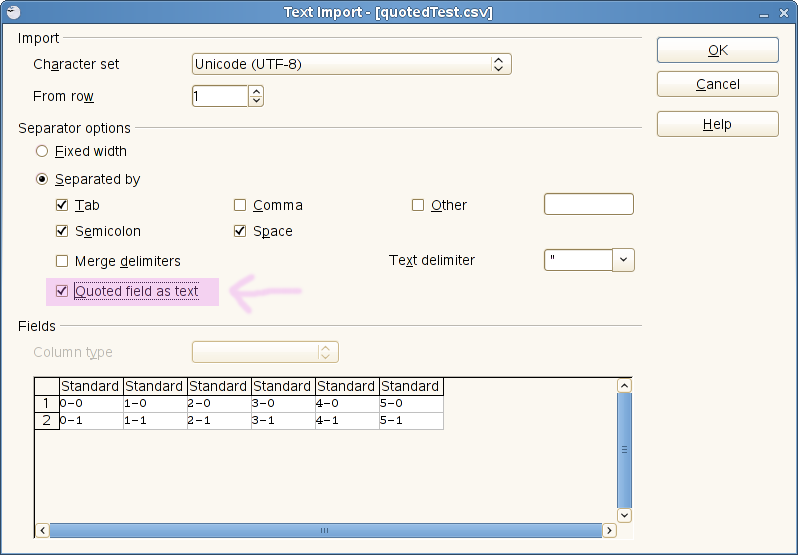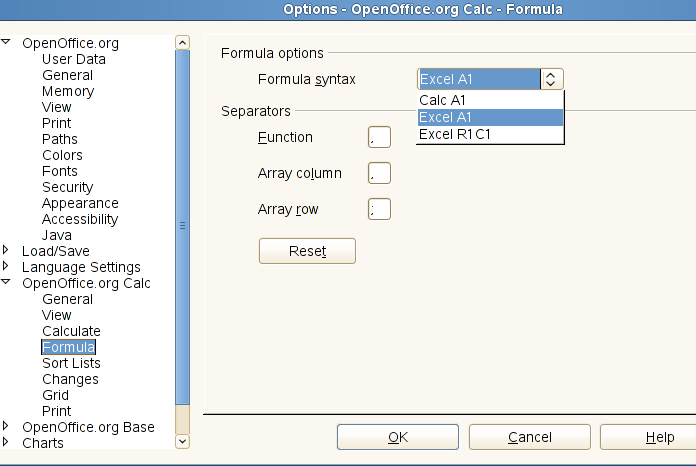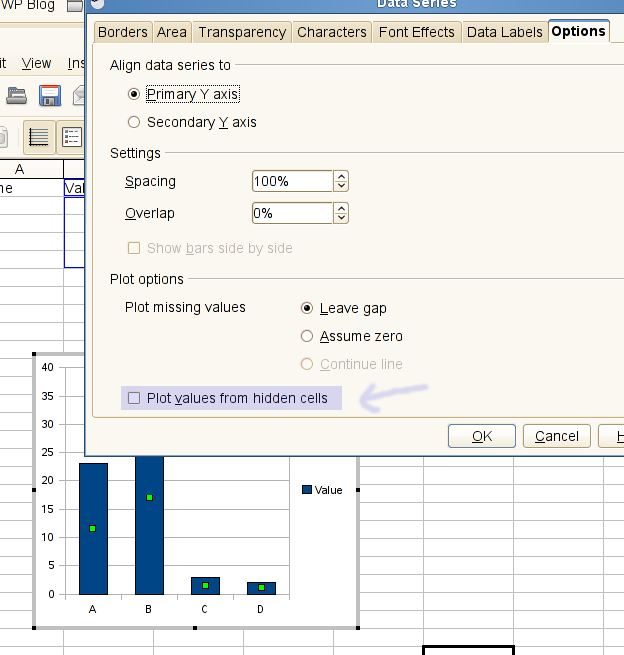Ok. This is another one I just checked into ooo-build trunk. It’s actually a very minor enhancement, but some people may find this useful.
What I did is to modify Calc’s csv import filter to provide the users an option to always import quoted fields (or cells) as text. Here is a screenshot of the dialog with this new option:
Hopefully what it does is self-evident. If not, here is an example.
Let’s say you have a csv file of the following content:
"0-0" "1-0" "2-0" "3-0" "4-0" "5-0" "0-1" "1-1" "2-1" "3-1" "4-1" "5-1" |
When you import this file into Calc, here is what you get with the current version:

As you can see, most of the fields got converted to dates. You get the same results even if those individual cells are not quoted, because Calc’s current csv import filter doesn’t make any distinction between quoted and unquoted fields in terms of data types.
When you import this file using the new option, you get this instead:

Now, all quoted fields are imported as text, with no surprise conversion. Plain and simple. :-)


